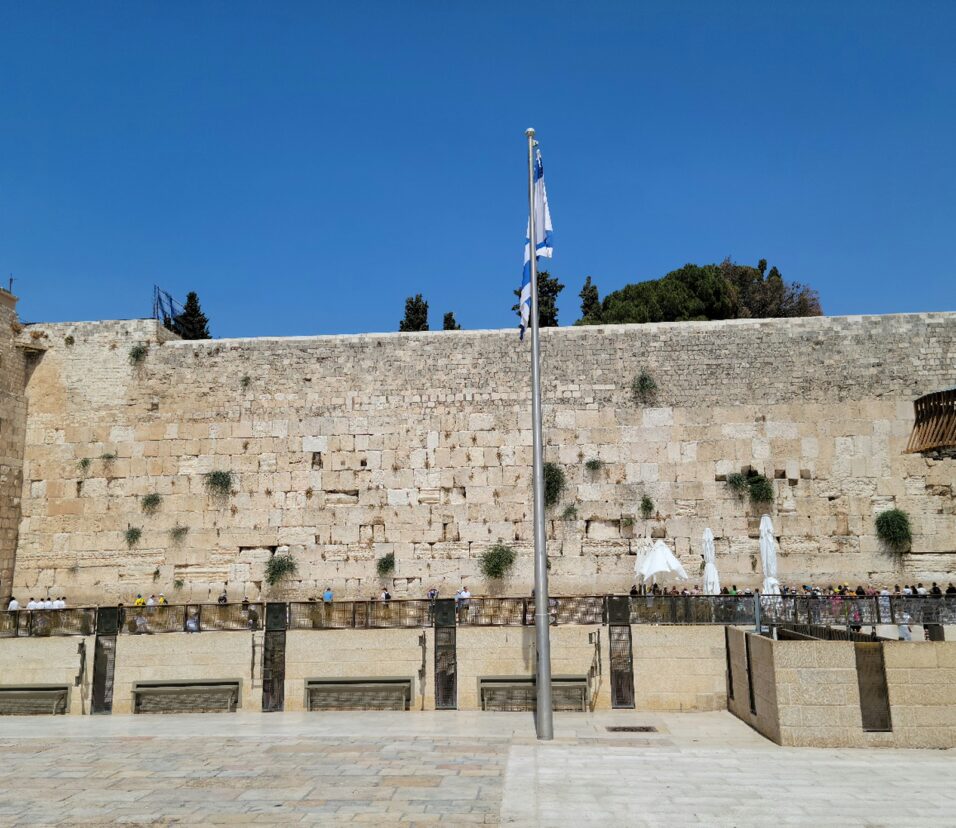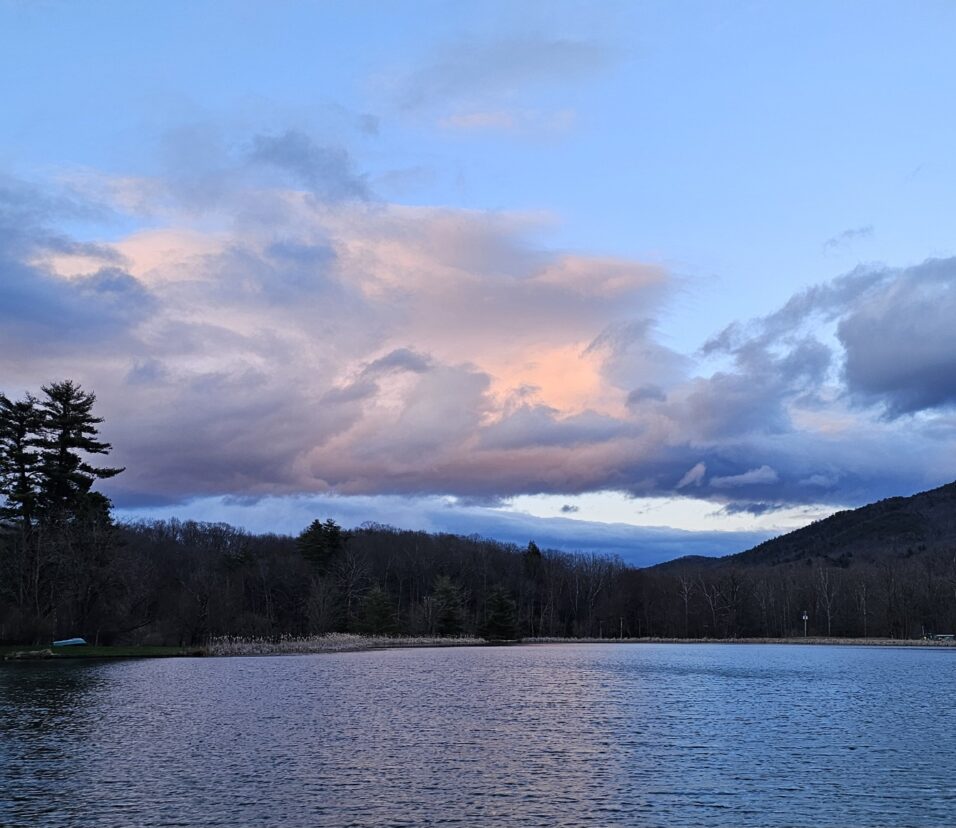Karmel just Knocking Around above and below ground at Mammoth Cave National Park
A lot of our friends and relatives asked, “Why Mammoth Cave National Park?” Most, if not all, of them had never even heard of the place. It is actually one of the least visited National Parks in the United States. That was good enough to put it up there on our list.
The draw to this park is that while all of the other National Parks are pretty much above ground, and their features can reach high into the upper stratosphere, the main feature is well below ground and boasts the largest cave system in the world, currently at 426 miles.
The Park is located in southwestern Kentucky in an area that is known for, believe it or not, sinkholes. They are very common and there is evidence of them all over – some of which can be explored by hiking some of the trails around the Park.
We arrived at the Park late in the day and so after we checked out the Visitors Center, we decided to go and survey the area with a few short excursions before it got dark.
We did the Echo River Spring Trail which is a loop from the parking lot that is a little over ½ mile. It wasn’t really a hike, but more of a walk on a carefully constructed trail of wood planking that is very wide, family friendly, and handicap accessible. It was just on a lark that we chose this path because it proved a great first look at what we could expect.

The trail, which is right along the Green River, had a lot of vegetation but gave a first view into what can happen in this area of sinkholes. There was a small stream of water that is flowing but from where…remains unknown. At first glance it appears that there is a dried up gulch, but as you get closer, you hear and see the moving water.

We also quickly learned that the listed distances of the trails in Mammoth Cave National Park are one way. So you are going to be doing double if you decide that you want to return to the trailhead. And if you are looking for a loop, rather than an out and back, the majority of the trails connect with another trail…meaning…it’s a trail system. So you have to carefully look at the maps provided by the NPS and create your intended hike before you start out. Otherwise, you can be wandering around the forest, up in the mountains, or down in a sinkhole.
The second short venture out was the Sand Cave Trail. This trail was only a quick trek of less than ¼ mile out and back. It was also a carefully constructed trail of wood planking that brings you to the site, the opening, of the cave where local cave explorer Floyd Collins became trapped and eventually died in 1925 after rescue workers failed to reach him in time.

While Melissa and I can be adventurous, and Melissa is much more adventurous than I am, especially when it comes to heights, the fact that the ground in the area can be so unstable because of the sinkholes gave us pause, and we resisted the idea of venturing too close to the caves.
That was enough for us to plan our next day, our one full day, in the Park, and we went back and settled in to our accommodations for the night – Wigwam Village No. 2. Read that story here.
There are many tours of Mammoth Cave and they were all pretty much booked. The only tour left for us to join was 2:45 in the afternoon. So we had some time for a morning hike. We knew it was going to be hot…in the 90’s…so we made an effort to get started early. It wasn’t early enough. It was already 91 by the time we got out there.
We wanted to see an actual sinkhole and so we chose the Cedar Sink Trail. The map listed it at one mile. But, of course, it wasn’t. It was one mile just to get TO the sinkhole. And it’s a sinkhole. So there are a LOT of steps down. And once you get down…there are a LOT of steps back up. They always seem like more on the way back up.

So after the first two treks were on wood planking for the ease of visitors, we were now back to real hiking. The main trail is easy to moderate, and there are smaller trails that veer off the main trail for those who want to explore the surrounding area. The steps…did I mention the steps? We were 500 feet down. And we ventured close to the very bottom, but Melissa was leery about getting too close to a spot that has clearly been jostled a time or two.

Ya know…with all of this talk about sinkholes…what exactly IS a sinkhole anyway?
According to the United States Geological Association…a sinkhole is a depression in the ground that has no natural external surface drainage. Basically, this means that when it rains, all of the water stays inside the sinkhole and typically drains into the subsurface. Sinkholes are most common in what geologists call, “karst terrain.” These are regions where the types of rock below the land surface can naturally be dissolved by groundwater circulating through them. Soluble rocks include salt beds and domes, gypsum, limestone and other carbonate rock.
Kentucky is an area largely underlain by limestone and is highly susceptible to sinkholes. When water from rainfall moves down through the soil, these types of rock begin to dissolve. This creates underground spaces and caverns.
Melissa has heard all about sinkholes from me. Because there has been one right on the side street next to where she has lived and continues to get deeper and nobody cares. Well, at some point they will.

By the time we got back to the trailhead, we were both soaking wet and needing a change of clothes. We were going to be heading into Mammoth Cave and the temperature is a tad cooler at 54 degrees and neither one of us wanted to go into that environment wearing wet clothing.
But we also needed to eat something. And you know what we discovered? That there is pretty much nothing to eat in the vicinity of Mammoth Cave National Park other than fast food.
The interchange off of I-65 at Exit 48 which is Route 255 boasts 12 restaurants. Restaurants? Well…there are a couple of RESTAURANTS. There’s a Mexican eatery called El Mazatian and, of course, the old standby, Cracker Barrel. The rest? All fast food – McDonald’s, Kentucky Fried Chicken, Wendy’s, Pizza Hut, Subway, Long John Silver’s, Shoney’s. Oh…there IS another restaurant…Bucky Bees BBQ. Bucky Bees doesn’t have anything for someone who is not a meat eater unless you might be interested in a small side salad…minus the bacon bits.
It was frustrating that we couldn’t find something other than the fast food extravaganza, other than a meat eater’s paradise, and other than Cracker Barrel which had a VERY long wait. And, so, out of mere frustration, we had to settle for a McDonald’s meal. Chicken McNuggets for Melissa and a filet-o-fish sandwich for me…my first time eating a McDonald’s meal in over 15 years.
Even more frustrating was that the kiosk where you can place an order using artificial intelligence wasn’t working, even after three attempts, and then waiting for semi-artificial intelligence was futile because no living piece of protoplasm was at the register. Eleven (11) minutes went by before someone finally came to take the order from the famished couple in front of us. When it was my turn, I presented our order and I said, “By the way, the kiosk is not working.” Nothing. Not a response. Not a look. Not a movement. Heeeeelloooooo? Is she waiting for me to add a hot fudge sundae or hot apple pie into the mix? Nothing. Crickets.
Another seven (7) minutes later we had our feast. All I had in my head was, “You KNOW this is going to destroy us and we are going to be down in that cave…” But…
…we were still wet from sweating in the sweltering Kentucky heat while climbing out of a sinkhole so we quickly changed back in the Visitor Center.
Finally…THE cave. Melissa booked a two-hour historic tour. This tour – which is the shortest of all the guided tours – delves into the history of the area, the history of the cave and its discovery, and the history of the people who actually were such an integral part of the history of the cave.
It all started with a strongly-worded speech, rather, lecture, by Ranger Nolan who was assisted by Ranger Haley. There would be no stop for pictures so as not to slow down the group…except when told. Then it was okay.
By the way, what’s the difference between a cavern and a cave???
That can be very confusing because the words are often used interchangeably when, in fact, they are not really the same at all. They can be formed the same way, by the same natural occurrences, but it will all depend on the “expert” you ask on the specifics of those differences. For the most part, as it has been explained to me, there are a few factors. A cave will have one opening and a cavern may have multiple openings. A cavern is actually a category of caves. It can also be, or contain, a series of caves. Caverns are usually found to have the stalactites and stalagmites that we have all come to be fascinated with. Caves will not necessarily have those features. Caverns will often be very moist, very wet, with a lot of water creating mirrored pools. Caves can often be dry and, therefore, will not have the ability to create the formations seen in caverns. The best way to put it…all caverns are caves but not all caves are caverns.
There were a lot of people on the tour…I would estimate that there was about 75-100 people. And, as Melissa noted, there really wasn’t any annoying people who could disturb a tour. Everyone was pretty much compliant with Ranger Nolan’s rules and kept up with the fast pace.
Melissa asked if anyone ever considered how dangerous it might be considering the sinkhole issue especially considering how far down we were. We were about 20 stories down beneath the surface. Well, she asked ME, she wasn’t going to ask in a large group setting.

We quickly made our way down, way down, into the cave and began on a carefully carved and well-maintained smooth rocky surface and passed through many cavernous (notice that? Cavernous?) pathways. It can get slippery and it was, in fact, very cool. Temperature cool. A HUGE relief from the overwhelming heat up at the surface.
Ranger Nolan meandered us through the wide open spaces and stopped to give us 10-15 minutes talks on the history of the cave, how important the cave was to the War of 1812, and the people who worked to explore and extract commodities (valuable back in the day) from the cave.

At some point the space was about to get a bit smaller, a bit tighter. If you have a bad back, have no dexterity, or are claustrophobic, there are a couple of spans of the path that will test your body and your will to continue. There is one that is so aptly named, although might be offensive to some in today’s world, Fat Man’s Misery. I am small – 5 feet 4 inches tall and a whopping 138 pounds dripping wet. I was bending, contorting, and squeezing. The young children on the tour were loving it. Some of the “larger” people…not so much.

That’s where the tour got challenging. At some point along the way, we passed the bottomless pit. It goes down 105 feet. So is it REALLY “bottomless?” I mean, it HAS to have a bottom if they measured it, right?

And then we came upon Mammoth Dome, the feature that everyone was waiting for. It stretched really high. It stretched 91 feet high. You look, take a couple of pictures…that’s where we were actually given permission, and even a strong suggestion to take pictures. Because, once you turned your head…the REAL challenge of the climb back up was staring us right in the face.

I said to Melissa, “Let’s stop and take a selfie.” She said, “No, I don’t want to be left behind.” Left behind? There are all of these people left to climb up the FXXXING steps! THEY are stopping to take pics and, really, catch their breaths! Who is leaving us behind?
Rangers Nolan and Haley did a great job with a very large group in a very tough setting. The tour was very well worth it and it definitely is a National Park – at least the Cave part – that needs to be experienced. It’s somewhat challenging but don’t let that scare you off. The two-hour tour was enough for us, and was filled with great information and some great historical sites along the way…even graffiti (they didn’t call it that back then – they were cave markings) from well over 100 years ago.
But getting back to the difference between caves and caverns…if you are expecting to see stalactites and stalagmites and a lot of mirrored waters…you will be disappointed. We recently ventured through Luray Caverns in Virginia and the views inside were truly magnificent. And we got to do that trek alone, at our own pace, and take as many pictures as we wanted. Mammoth Cave is different. It’s like comparing apples to oranges…rather…caves to caverns. It’s not that I don’t like a good, dark, deep cave, but sometimes I am just in the mood for a dark, damp, wet cavern.
The views, the huge crevasses, the rock formations, the tight squeezes, were all intriguing and interesting. We’re talking about the caves now. But the bottomless pit….if not for the sign…well…I am not so sure what that does for anyone. And someone had told me the day before that Mammoth Dome would certainly take my breath away like nothing I had ever experienced. No…the view didn’t do that…but the climb up the 20 flights of stairs certainly did.
If you are thinking that you are going to do some serious hiking…you MIGHT be disappointed. This is not Grand Teton National Park. But it doesn’t have to be. Each National Park has its own uniqueness and its own features. You might not be scaling a mountain, but the stairs heading down into a 500-foot sinkhole, and then climbing back up is challenging in itself. The sights were we saw were still truly amazing.
After the huge ascent back up, we still had to make our way back to the entrance of the cave and again pass through some of the huge spaces and see the remnants of fallen rock. We were instructed to walk over soapy floor mats to rid our feet of the dust from the cave floors that contain particles of white nose virus that can kill bats.

The climb back up. Daylight. We trudged back up, washed our feet, and re-entered the world of overwhelming heat. We were in a rush to get to the Visitor Center before 5 p.m. to get Melissa a Christmas ornament. And there was still a rather hefty climb uphill to the Center with only seven minutes until closing. Melissa looked at me and said, “Go Alan, go on without me. Don’t worry about me. If I collapse, one of the Rangers will get me.”
The challenges we face…





